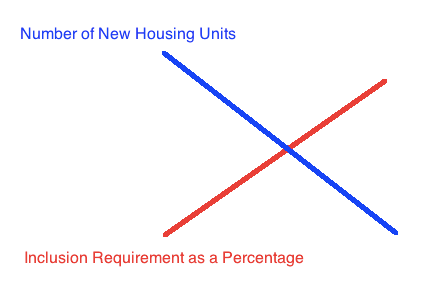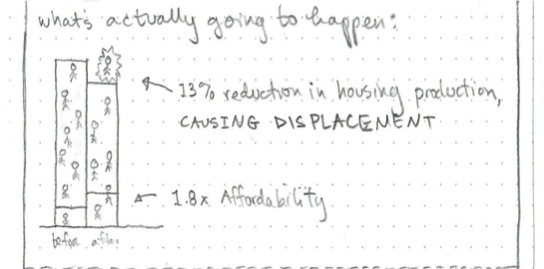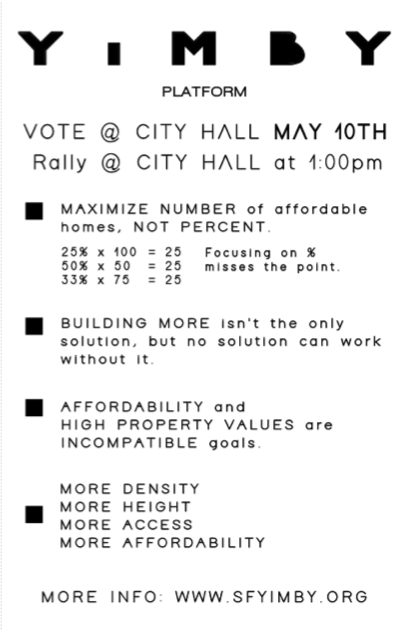Sonja Trauss on MIZ: What’s Actually Going to Happen
Last Thursday one of my heros, Sonja Trauss, was in town because I invited her to speak at the Seattle Builders Council dinner. We all had a good time. And Trauss did not disappoint with her presentation, challenging the audience to talk differently about housing, and profit, and how we need more housing to solve our housing price problems. Trauss and I always compare notes. Probably absent from anyone’s coverage will be what she said about Mandatory Inclusionary Zoning: it won’t work. Or at least it won’t help solve the problem the Mayor and his friends and his staff are insisting they want to solve, high housing prices. The Mayor wants a good political solution. Bingo! You got it! We punish developers, build some affordable units, and call it a compromise. Good work! But what happens to housing prices and housing scarcity. Those problems get worse. Trauss summed it up perfectly with one slide.
What are the actual numbers, not just the concept of 25% of 100 units = 25 units and 50% of 50 units = 25 units? We don’t know because the City has not shared any numbers with us. None. And they have not been forthcoming with their methodology. But the concept, the principle in basic math, that increasing the percentage of something while the number goes down is basic to the reason why MIZ won’t make overall housing prices go down; in fact it’ll make the problem worse.
Trauss included these arrows on her first slide that demonstrate a simple truth that hasn’t penetrated the skulls of anyone downtown: when you demand more inclusion, then you get fewer projects, and that means less housing, market rate and affordable over all. We’ve been around and around this concept with the Multifamily Tax Exemption; when you increase the costs to participate in the program by increasing the level of subsidy required (this happens when Council keeps lowering the threshold of Area Median Income) you don’t get more deeply affordable units, say at 40 percent of Area Median Income (AMI), you get fewer units of 60 percent AMI priced units.
This happens because projects simply won’t work when the costs of the inclusion exceed the additional height or floor area ratio (FAR) being added. Trauss’ point is that when we obsess about the percentage of inclusion, we forget the fact that when that drifts too high, we get no projects at all, fewer units, scarcity, and higher prices. There it is in simple pictures. Maybe this will help get the idea across: we need more housing, not political gimmicks.




